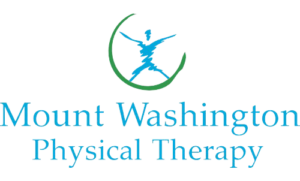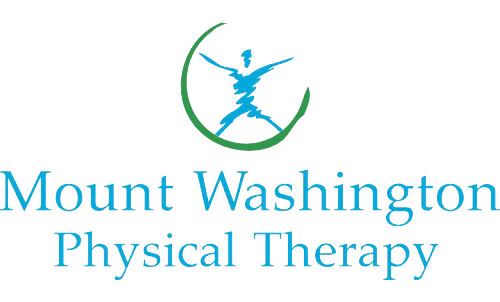Causes and Treatment of Common Shoulder Conditions
BY Joshua Wies, PT
If you are like many people, you may notice pain in the shoulder when changing a light bulb or reaching for something from a high shelf. In fact, 30 percent of the general population experiences shoulder pain at one time or another with about half of those experiencing the pain as chronic (for three months or more). In this article, I will describe some of the common musculoskeletal disorders affecting the shoulder, why they occur and what to do about them. This is not meant to be an exhaustive primer on the shoulder and, when in doubt, see your primary care physician as certain more serious conditions can mask as shoulder pain.
The shoulder is a rather complex part of the body, comprising three bones: the collar bone (clavicle), the shoulder blade (scapula) and the upper arm (humerus). Where the bones join together at the joints, ligaments hold one bone to another with further support coming from the surrounding muscles. The ligaments surrounding the main shoulder joint form a continuous sheath called the capsule, which is filled with lubricating (synovial) fluid. The muscles attach to the bones by tendons; these are normally incredibly strong due to their collagen content having a tensile strength greater than steel!
There are 26 muscles that attach to the shoulder and they all need to work in concert with one another. The larger muscles are known as the prime movers and they power arm movements (like the engine of a car) and the smaller muscles control the fine movements within the shoulder joints (more like the car’s steering wheel). These smaller muscles are analogous to the ‘core’ muscles of the abdomen. Just as weak abdominal core muscles can lead to back pain, a weak core in the shoulder can lead to problems. For the shoulder, the ‘core’ muscles are those of the rotator cuff and the serratus anterior.
Any imbalance in the muscle action during shoulder movements – due to injury, weakness, tightness, or faulty alignment – can lead to problems. The shoulder is a ball and socket joint (due to the spherical shape of the humerus resting in its socket on the scapula) and it is the most mobile joint in the body. As you reach in any direction, the ball must stay centered in its socket. When the ball does not stay centered it can shift slightly forward or upwards and this can result in rubbing of the adjacent soft tissues. This is important because if the ball shifts up during reaching movements, the rotator cuff can be squeezed or impinged–a very common cause of shoulder pain. This is known as rotator cuff impingement leading to rotator cuff tendinopathy (pathology of the rotator cuff).
You might want to take a look at yourself in the mirror and do a self-check of your posture. Is your head forward? Is your upper back a bit rounded? Where are your shoulders in relation to the top of your chest? Gravity tends to pull everything down and forward, and many activities such as sitting at the computer, using smart phones, watching television, and driving all tend to encourage a forward-rounded posture. To continue the car analogy, when the shoulders migrate forward it’s like driving with the front wheels pointing inward – things will rub where they shouldn’t, the muscles in the front of the shoulders become tight and the muscles in the back of the shoulders (the rotator cuff) become over-stretched and weakened.
Postural malalignments and impingement in the shoulder described above can lead to gradually worsening pain in the shoulder, the origin of which can be difficult to determine.
Trauma to the shoulder is a more obvious cause of pain. A fall onto the shoulder or outstretched arm can cause a painful bruise, a damaged ligament or a torn rotator cuff, even a broken bone; a sudden load to the shoulder such as throwing a ball, serving in tennis, or when walking a dog that suddenly takes off after a squirrel, jerking your arm, all can result in overstretching or even a rotator cuff tear.
A less common, but very painful condition of the shoulder is adhesive capsulitis or frozen shoulder. Generally, this presents as a sudden onset of unexplained pain, often to the point of disturbing one’s sleep due to a rapid loss of movement in the shoulder. It becomes almost impossible to lift the arm either actively or passively, thus the moniker ‘frozen’. This condition will get better but can last 18 months, divided into three equal phases – freezing, frozen, and thawing. Early intervention by a specialist is recommended to reduce the duration of suffering.
Finally, there is the condition of arthritis affecting the shoulder – either inflammatory (such as rheumatoid) or non-inflammatory (such as osteoarthritis). Inflammatory arthritis should be managed by a physical therapist under the medical management of a rheumatologist as there are now very effective medications that can help this condition. The more common osteoarthritis can also be helped by the above combination of PT and medical management. There is some evidence that acupuncture helps with osteoarthritis although the literature is equivocal.
Shoulder pain is almost always treatable with conservative management. It is always best to rule out any serious conditions by a physician but a good physical therapist should know when to refer to a doctor as well. A wait-and-see approach beyond 2 – 4 weeks is ill-advised as, if the problem does not resolve within this time period, it will quite often become chronic and create secondary problems.
The strongest evidence for improving shoulder pain is exercise. This generally comprises work to redress any imbalance between overly tight muscles and weakness. The correct prescription will consider the stage of the problem: earlier in treatment – and for more acute conditions – the focus is on reducing pain and swelling; the workload is later increased, as tolerated, without aggravating the symptoms. The rationale for treatment should be to stimulate healing and self-repair of the involved soft tissues and, ultimately, returning back to the desired function (such as recreation or activities requiring reaching up). Realistically, recovery from a more chronic shoulder problem will take about 12 weeks, although significant improvement is often experienced more quickly.
A purely passive treatment such as massage can help in the short term but is unlikely to cure the problem. A combination of hands-on work with exercise will yield the best outcome, and a home exercise program will ensure that you maintain gains made. When progress is not made in therapy, it is important to consult with a shoulder specialist as surgery may be needed.
In summary, if you experience shoulder pain, you are in good company – it is a very commonly encountered condition. Consult with a person experienced in shoulder treatment. Don’t live with pain for more than a month as that can worsen the problem. Relief and return to your pain-free life is often possible and prescribed exercise is, as always, the best medicine.
If you have a question about your shoulder problem, please feel free to contact me as I am a shoulder specialist and may be able to offer further advice to help your recovery.
www.mountwashingtonphysicaltherapy.com
410-542-6878


